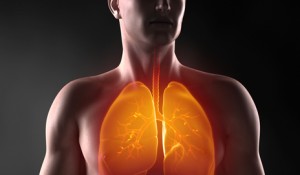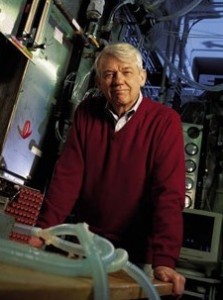MIGHT, Kuala Lumpur, Malaysia (Malaysian Industry-Government Group for High Technology)
11 Jan 2015
Additional Malaysian nanoscience research includes converting greenhouse gases into energy source;
‘Smart farming’ nanosensors; New program aims for macro impact in health, energy, environment, agriculture, electronics
 Malaysian scientists are joining forces with Harvard University experts to help revolutionize the treatment of lung diseases — the delivery of nanomedicine deep into places otherwise impossible to reach.
Malaysian scientists are joining forces with Harvard University experts to help revolutionize the treatment of lung diseases — the delivery of nanomedicine deep into places otherwise impossible to reach.
Under a five-year memorandum of understanding between Harvard and the University of Malaya, Malaysian scientists will join a distinguished team seeking a safe, more effective way of tackling lung problems including chronic obstructive pulmonary disease (COPD), the progressive, irreversible obstruction of airways causing almost 1 in 10 deaths today.
Treatment of COPD and lung cancer commonly involves chemotherapeutics and corticosteroids misted into a fine spray and inhaled, enabling direct delivery to the lungs and quick medicinal effect. However, because the particles produced by today’s inhalers are large, most of the medicine is deposited in the upper respiratory tract.
The Harvard team, within the university’s T.H. Chan School of Public Health, is working on “smart” nanoparticles that deliver appropriate levels of diagnostic and therapeutic agents to the deepest, tiniest sacs of the lung, a process potentially assisted by the use of magnetic fields.
Malaysia’s role within the international collaboration: help ensure the safety and improve the effectiveness of nanomedicine, assessing how nanomedicine particles behave in the body, what attaches to them to form a coating, where the drug accumulates and how it interacts with target and non-target cells.
 Led by Joseph Brain, the Cecil K. and Philip Drinker Professor of Environmental Physiology, the research draws on extensive expertise at Harvard in biokinetics — determining how to administer medicine to achieve the proper dosage to impact target cells and assessing the extent to which drug-loaded nanoparticles pass through biological barriers to different organs.
Led by Joseph Brain, the Cecil K. and Philip Drinker Professor of Environmental Physiology, the research draws on extensive expertise at Harvard in biokinetics — determining how to administer medicine to achieve the proper dosage to impact target cells and assessing the extent to which drug-loaded nanoparticles pass through biological barriers to different organs.
The studies also build on decades of experience studying the biology of macrophages — large, specialized cells that recognize, engulf and destroy target cells as part of the human immune system.
Manipulating immune cells represents an important strategy for treating lung diseases like COPD and lung cancer, as well as infectious diseases including tuberculosis and listeriosis.
Dr. Brain notes that every day humans breathe 20,000 litres of air loaded with bacteria and viruses, and that the world’s deadliest epidemic — an outbreak of airborne influenza in the 1920s — killed tens of millions.
Inhaled nanomedicine holds the promise of helping doctors prevent and treat such problems in future, reaching the target area more swiftly than if administered orally or even intravenously.
This is particularly true for lung cancer, says Dr. Brain. “Experiments have demonstrated that a drug dose administered directly to the respiratory tract achieves much higher local drug concentrations at the target site.”
COPD meanwhile affects over 235 million people worldwide and is on the rise, with 80% of cases caused by cigarette smoking. Exacerbated by poor air quality, COPD is expected to rise from 5th to 3rd place among humanity’s most lethal health problems by 2030.
“Nanotechnology is making a significant impact on healthcare by delivering improvements in disease diagnosis and monitoring, as well as enabling new approaches to regenerative medicine and drug delivery,” says Prof. Zakri Abdul Hamid, Science Advisor to the Prime Minister of Malaysia.
“Malaysia, through NanoMITe, is proud and excited to join the Harvard team and contribute to the creation of these life-giving innovations.”
The research effort with Harvard is one of several underway at the Malaysia Institute for Innovative Nanotechnology, initiated in 2013 through Malaysia’s Global Science & Innovation Advisory Council, led by YAB Prime Minister Dato’ Sri Najib Razak.
Nanotechnology involves manipulation of matter at a molecular scale (up to 100 nanometers, a nanometer being one billionth of a meter), and creating special properties of matter that occur below a given size threshold. Based at the Universiti Teknologi Malaysia in Kuala Lumpur, NanoMITe’s mission to engage in global scientific research collaborations to generate ideas, knowledge and products to benefit society while contributing to the national economy.
Over 100 leading scientific collaborators at world-class academies in Asia, Europe and North America are pooling extensive expertise to make nanotech-enabled advances in health, the environment, energy, food production, and electronics.
Says Idris Jusoh, Malaysia’s Minister of Higher Education, NanoMITe’s foremost financial supporter: “Together, science, technology and innovation constitute the engine that will drive Malaysia’s sustainable economic development and nanotechnology research is on the cutting-edge of our pursuits. It is key to the solution of persistent problems throughout our societies but such breakthroughs can only be achieved through collaborative, international research across a spectrum of scientific fields and converging results. Our ministry is proud to support these efforts.”
Other NanoMITe research efforts include:
Nanotech-enabled generation of renewable energy
The energy-related research all involves nano scale molecular manipulation using novel local materials, catalysts, processes and technologies to create, for example:
- Low temperature solid-oxide fuel cells for the power industry;
- Flexible solar cells for economically viable, clean renewable energy; and
- Converting waste biomass from palm oil trees into jet fuel, which could add an estimated RM 30 billion to the Malaysian economy by 2020, help meet renewable energy targets and reduce greenhouse gas emissions.
Says Prof. Datuk Dr. Halimaton Hamdan of the Universiti Teknologi Malaysia, head of NanoMITe: “A lot of materials in use today are characterized by low effectiveness and high energy consumption. Nanotechnologies are being used to create nanocomposites and catalysts that enable the production of lighter, more durable and stronger materials, more efficient use of resources and reducing energy consumption. Specific nanotechnologies will also create more efficient means of energy generation, storage and transportation.”
“We believe that within 20 years, nanotechnology could help reduce the intensity of energy needed to produce a unit of product by 45 percent.”
Converting greenhouse gases into valuable chemicals
Malaysian scientists are also investigating the possibility that, via nanotech, captured greenhouse gases can serve as carbon feedstock for use in chemical production.
Specifically, they’re looking to design catalytic-nanomaterials to convert GHGs — carbon dioxide and methane — into renewable fuels, offering a potential contribution to energy supplies, mitigating climate change and advancing economic development.
“Smart farming” with agricultural nanosensors
Fungus-related problems are estimated to cost the South East Asian economy US$500 million every year. Once infected with a common fungus (G. boninense), young oil palm trees usually die within 1 to 2 years; mature trees may survive slightly longer.
Now scientists at the Universiti Putra Malaysia and Universiti Malaysia Perlis are developing nano-sensors and nano-based systems to create smart, precision farming to help address this expensive problem.
With the aid of wireless communication networks, Geographic Information Systems (GIS) and Satellite Remote Sensing nanosensors embedded in trees, roots and soil can monitor and detect G. boninense disease. Automatic adjustments of pesticide applications, nutrients or irrigation levels would occur once disease, pests or drought are detected.
Such a smart farming system could also help make more efficient use of water, nutrients, fertilizers, pesticides, herbicides and plant growth regulators, improving stability against crop degradation and reducing pollution.
By understanding at nano scale the structure of the agricultural inputs and the soil, carriers can be designed to anchor plant roots to surrounding soil and organic matter.
Prof. Zakri, a leader of the GSIAC, underlined the crucially important role of the Malaysian Ministry of Higher Education to the NanoMITe program:
“Without the Ministry’s financial support and trust, NanoMITe could have never have been realized.”
###
Malaysia’s Global Science and Innovation Advisory Council is a unique forum of international and Malaysian experts and leaders created to help guide the nation’s sustainable development.
The Malaysian Industry-Government Group for High Technology is a not-for-profit public-private partnership with more than 100 members, both local and international, from industry, government and academia. MIGHT provides a platform for industry-government consensus building to advance high technology competency in Malaysia.
Example coverage:
Bernama (Malaysia), “UM-Harvard Collaboration To Tackle Lung Diseases,” click here; Malay, “UM-Harvard University Jalin Kerjasama Tangani Penyakit Paru-Paru,” click here
Agencia EFE (Spain), “Universities of Harvard and Malaya team up to develop nano medicines,” click here; Spanish, “Malasia y Harvard se unen para curar los males pulmonares con nanotecnología,” click here
Benessere, Milan, Italy, “Da USA e Malesia una speranza contro le malattie polmonari,” click here
ABC, Madrid, Spain, “El cáncer de pulmón y la EPOC se tratarán en un futuro próximo con nanofármacos,” click here
Medical News Today, UK, “Future of lung treatment: Malaysian scientists join Harvard team creating safe, effective nano drugs,” click here
Medical News, Australia, “Malaysian scientists join forces with Harvard experts to help revolutionize lung disease treatment,” click here
Coverage summary, click here
